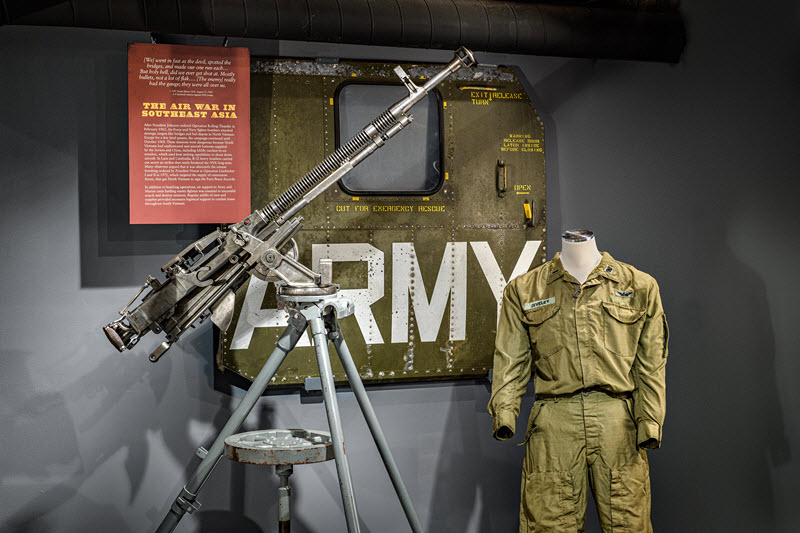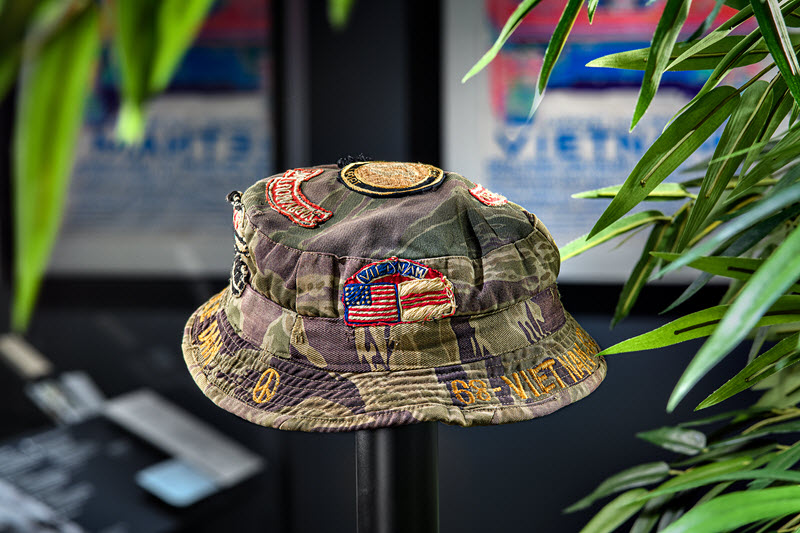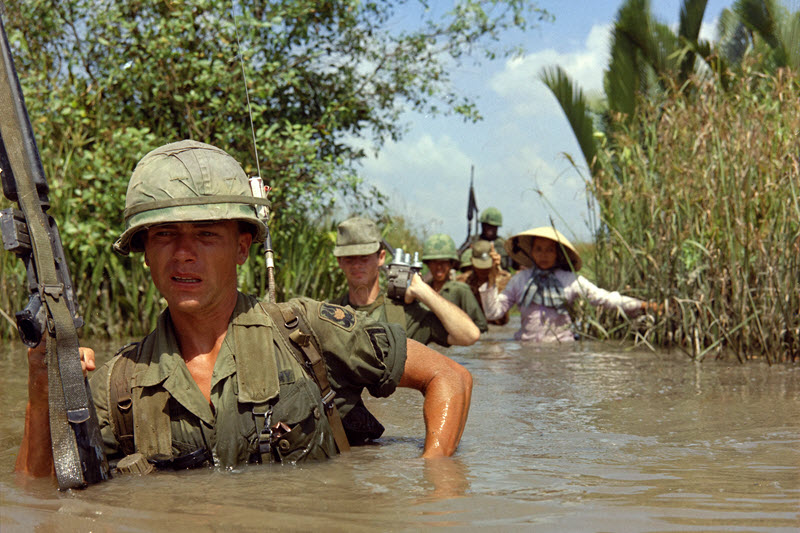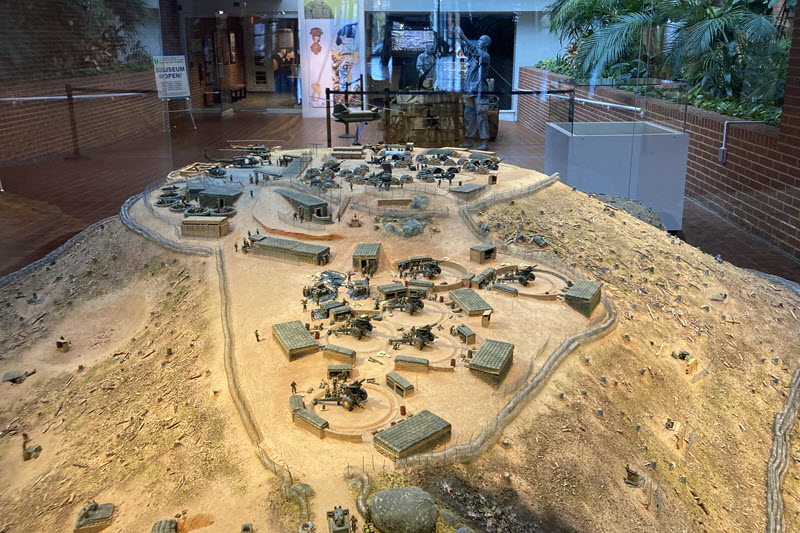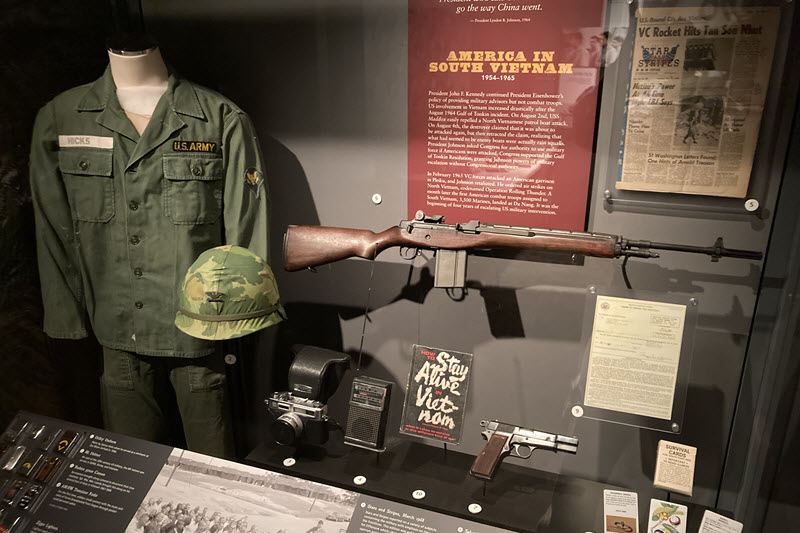The Vietnam War was a turbulent and emotional period in our nation's history, making it all the more important that we preserve stories of those who endured or served during it. Thankfully, the South Carolina Confederate Relic Room and Military Museum has taken an immense step forward in doing so by exhibiting a unique collection of artifacts from veterans — and surviving family members — with connections to the state who fought during the conflict, bringing their vivid accounts to museum visitors. Take this opportunity to gather around these powerful stories and appreciate just how much they have to offer.
This story was sponsored by the South Carolina Confederate Relic Room and Military Museum. The museum is open Tuesday – Saturday, 10-5 pm, and 1-5 pm on the first Sunday of every month. Adult admission is $6, except on Sunday when it is $1. You'll find the museum at 301 Gervais St., Columbia, SC 29201. 803-737-8095 • www.crr.sc.gov
In the middle of the 1960s, young men and boys who had thus far lived their entire brief lives in South Carolina found themselves on the other side of the world, more than 9,000 miles away. Many of them had never heard of the place before this migration began.
Some of them went because they wanted to, as that was the way of men from South Carolina, who had served with distinction in their country’s wars since before the Revolution. Others didn’t want to go at all, but they did, when they were called. They, too, served honorably.
Not all were young men. Some were women, who went there in their country’s uniforms to serve as nurses and in other support capacities. Some of the men weren’t so young, either. The gray-haired man in command of it all, William Westmoreland, was also from South Carolina.
They found themselves in a place that was even hotter than home, and not just in terms of climate. It was very dangerous. They all went intending to stay for a year, and most did. Some never came home. Some brought home medals. All brought home stories. But strangely, not even those with medals for valor in combat were treated like heroes when they returned – not the way their fathers had been. And not many folks back home wanted to hear the stories.
But they’ll hear them now. That’s the purpose of the sprawling new exhibit at the South Carolina Confederate Relic Room and Military Museum in Columbia. Years in the making, it’s called “A War With No Front Lines: South Carolina and the Vietnam War, 1965-1973.”
The 2,500-square-foot exhibit – which fills the brick-lined space that was once the cistern of the first fully electric textile mill in the world, Columbia Mills – is the first effort to tell the stories of the thousands of South Carolinians who fought in that faraway conflict.
It not only relates the history, but shows the uniforms your neighbors wore, the things they carried, and the weapons they fought with. You can hear the veterans’ voices tell the tale, and familiarize yourself with the environments in which they served – rice paddies, war-torn cities, the Highlands, the streams and swamps of the Mekong Delta, and the skies above.
They will encounter an overwhelming variety of artifacts, such as:
- Alex Miller’s orders to Vietnam – They were in his pocket when the mine went off. He came home seriously wounded.
- Cutaways of M16 and AK-47 – See how these ubiquitous automatic weapons worked. And that’s just the beginning of the weapons on display – mortar tubes and shells, hand grenades, grenade launchers, semi-automatic pistols, machine guns, and rifles from several countries.
- The fatigues worn by Myron Harrington. Then-Captain Harrington was awarded the Navy Cross for leading his company to the Hue Citadel when their battalion needed reinforcements during the Tet Offensive.
- The uniform worn by Gen. Westmoreland.
- The famous “uniform” of the Viet Cong – conical hat and black pajamas.
- The Flaherty letters – Steve Flaherty was born Yoshiaki Ushiroda in Japan in 1947 to a Japanese mother and an unknown American father. He would become the All-American boy, and give his life in the A Shau Valley.
- Chief Boatswain’s Mate James Elliott Williams’ uniform – Williams, a Cherokee from South Carolina, received the Medal of Honor for his heroic actions of October 31, 1966.
- Telegram to Rosanna Salley – James Salley’s wife received the message that all loved ones back home dreaded.
- A Vietnamese fertility idol, which Lieutenant Ralph Webb found in an abandoned Vietnamese village and shipped home. It represents the reverence for the fertility of nature central to the Vietnamese folk religions
- A Viet Cong manual on mines and booby traps.
- An American Smith & Wesson .38 Special revolver, captured from the Viet Cong in the Mekong Delta, and brought home by a career Naval officer.
- A black beret worn by sailors of the “Brown Water Navy.”
- The boots that were actually on the ground – American jungle boots with steel soles
to protect against punji sticks, and boots worn by their allies in the Army of the
Republic of Vietnam. - The sandals worn by the Viet Cong – made from tires.
And so much more. You’ll see a stunning variety of objects, placed in the context of displays that explain historical significance. Ordinary things like Zippo lighters, the metal bracelets that folks back home wore so as not to forget the POWs in Hanoi, and objects that show the ways men make do when they’re at war in a jungle – such as a letter Sgt. Bud Ferillo wrote to his family on a dismantled carton that had contained C-rations.
And more than the things they brought home with them, you can hear the voices of the veterans themselves telling their own stories. It took several years to put this exhibit together. Long before it took physical form, the Relic Room had collected the stories. The museum’s Fritz Hamer interviewed one veteran after another. Each interview lasted hours, and was recorded. Sound kiosks in the museum enable visitors to hear clips from the interviews.
As far away as it was, the war in Vietnam radically changed America. It was a major turning point in our history. The United States stood as a colossus astride the world after 1945. But this war in this one little country, unlike most of its predecessors, divided America. It changed Americans’ very concept of themselves – not only our ideas of how we should interact with the rest of the world, but how we related to each other at home, and especially to our government.
